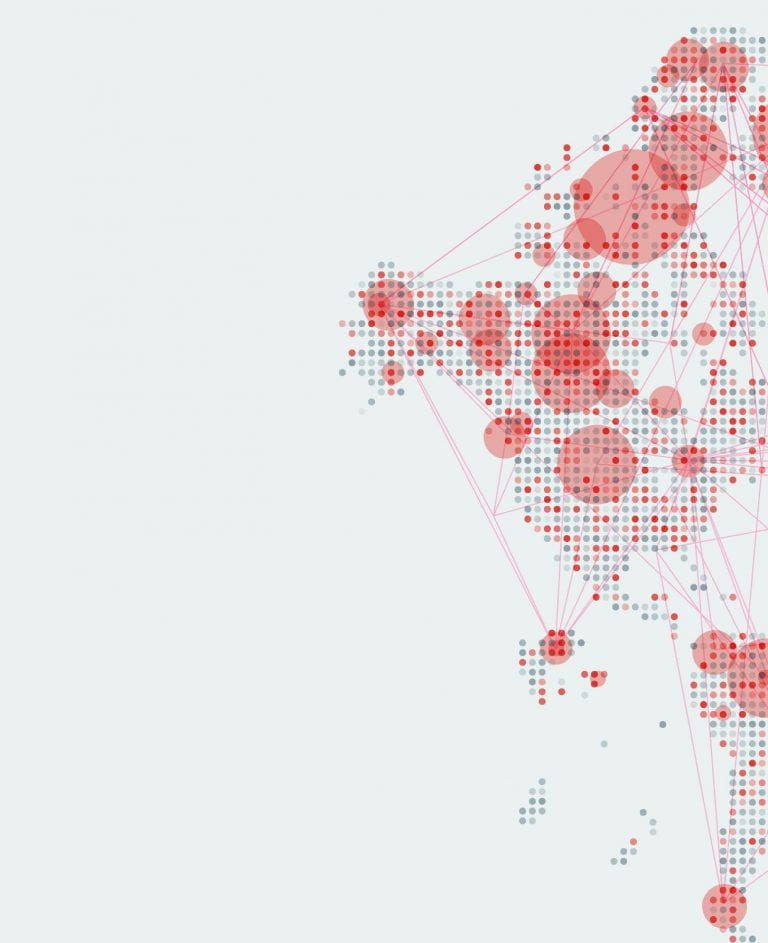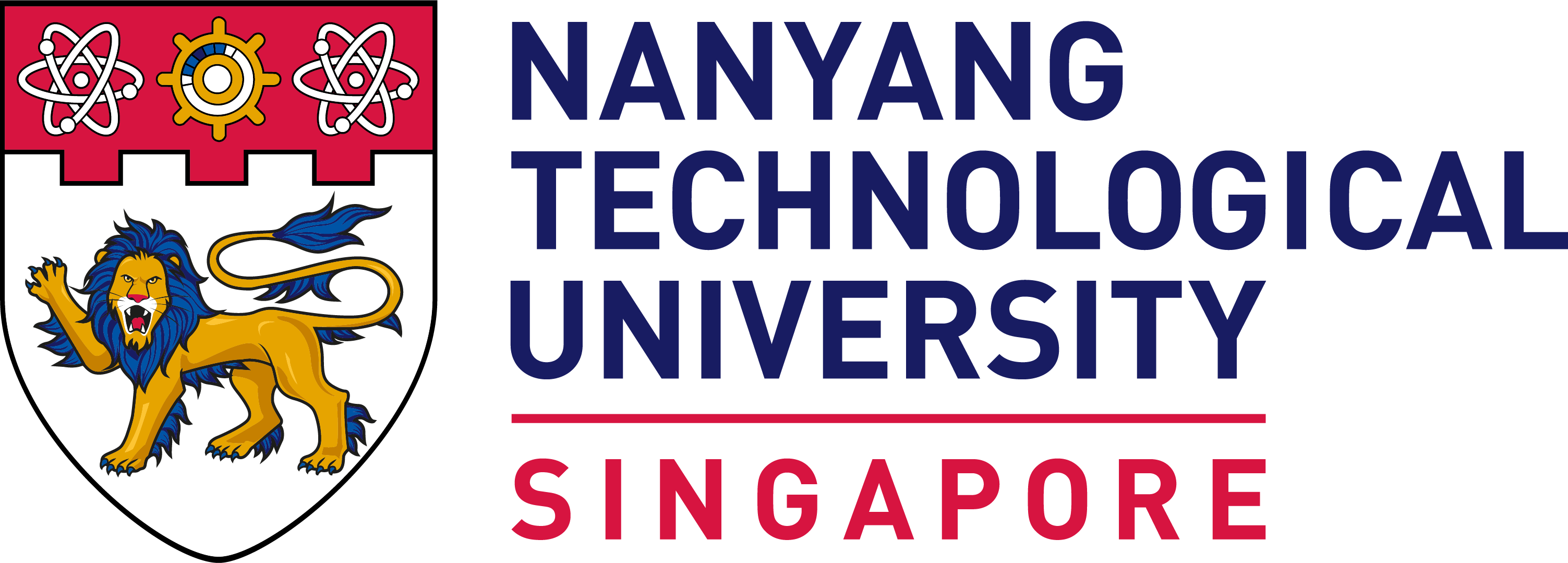Connecting the dots in a complex world
Researchers at NTU’s Complexity Institute are modelling diverse outcomes in complex systems, ranging from pandemics to economic inequality.
 Researchers at NTU’s Complexity Institute are modelling diverse outcomes in everything from pandemics to economic inequality.
Researchers at NTU’s Complexity Institute are modelling diverse outcomes in everything from pandemics to economic inequality.
What do a flock of birds, global financial markets and your immune system have in common? Each one is an example of a complex system, where the interaction of multiple components gives rise to interesting behaviour that is greater than the sum of its parts.
Take for example the immune system, which is made up of networks of molecules and cells that interact among themselves and with their environment in unpredictable ways. The difficulty of understanding such a system lies in the fact that its collective behaviour is often impossible to predict, since the interactions and relationships between its elements behave differently than each element would individually.
The late Stephen Hawking once predicted that this century would be one of complexity, which is precisely the challenge that researchers at NTU’s Complexity Institute relish. Recognising that understanding complexity is key to societal progress, the Institute’s goal since its founding in 2014 has been to promote collaborative research that uses complexity science as a common language across disciplines to understand a myriad of complex systems.
The century of complexity
“We live in a highly connected world, surrounded by a large diversity of complex systems from the molecules in our body to the people that build up our society,” says Prof Peter Sloot, Director of NTU's Complexity Institute. “So if we want to understand the world around us and design policies to make things better on all fronts, we need to understand the underlying complexity so that we can nudge the system to the outcomes we want.”
But one can hardly predict what a system will do after such a nudge, as the intervention itself would have turned it into a completely different system, Prof Sloot points out. A good illustration of this idea is the human brain, where neurons interact in a slew of dynamically changing networks.
“At what point in time does a thought emerge out of the interactions in a network of neurons? Which neurons would you trigger, and at what point in the system would you intervene to generate a particular thought? The short answer is, we don’t know. We have no clue how changes in the constituting elements of a complex system affect the system’s emerging properties.”
What complexity science needs to focus on, Prof Sloot says, is new ways to assess the possible outcomes of these interventions. Currently, the most promising approaches for that come from non-linear out-of-equilibrium dynamics and information theory, he explains, noting that this is something researchers at NTU’s Complexity Institute and the Institute for Advanced Study at the University of Amsterdam in the Netherlands have been working on.
Modelling a pandemic
Prof Sloot’s own work at the Complexity Institute has tried to make sense of virology and the epidemiology of infectious diseases. For example, he has developed a predictive outcome system for HIV infection.
After receiving financial support from NTU and the European Union to study the pathways of HIV transmission, Prof Sloot was faced with a question: To stop a pandemic, would the money be better spent on better medical treatments or on changing behaviour?
For Prof Sloot, it all went back to the search for ways to capture the fundamental rules and processes that drive a pandemic. “It is clear that any answer to such a question requires an in-depth study of all the connectivity and feedback loops from molecule to mankind,” he says.
To gauge the effects of medical and social interventions, Prof Sloot used an approach that took novel insights from complexity science. Together with his colleagues, he developed computational models that captured the infection and transmission processes across time and space before checking that model against historical data to generate a suite of hypothetical scenarios.
“Like a telescope that opens up a vista to the stars, computers have opened up amazing new ways to analyse different levels of complexity and unravel connections between them,” he says. “Whatever idea I wanted to explore about these connections, there was always an algorithm I could design to improve my understanding of it.”
Looking into the future
The models designed by Prof Sloot to study HIV infection and transmission show promise of being used for other virus outbreaks. The SARS-CoV-2 novel coronavirus, for example, is an RNA virus like HIV. Although the subsequent infection, transmission and disease progression patterns are completely different from those of HIV, Prof Sloot believes both complexity science and the Complexity Institute’s cross-disciplinary approach can help.
“One of the hardest things to capture in models are the behavioural aspects related to hygiene, distancing and quarantine because of cultural and religious aspects that we hardly understand,” Prof Sloot says. “So we need social and behavioural scientists next to immunologists and epidemiologists. I am convinced that the only science that can connect the dots of this horrible pandemic is complexity science.”
In collaboration with the Centre for Urban Mental Health at the University of Amsterdam, Prof Sloot is using a complexity approach to understand the impact of the COVID-19 pandemic on people living in dense urban areas. By integrating previously unconnected theories about urbanisation and mental health, Prof Sloot and his team hope to understand why some individuals thrive in urban settings whereas others end up developing mental problems.
With everything complexity encompasses, could a better understanding of it predict future pandemics?
“As we speak, in many places in the world, complexity scientists are building predictive computational models that help governments assess possible intervention strategies,” Prof Sloot says. “Prediction is difficult, especially when it is about the future, but we need to give it a shot. I don’t think there are other theories and methods that can do the job.”
And even if it is difficult to predict the future, Prof Sloot is sure of one thing: We have an exciting journey ahead. And that journey, if Stephen Hawking is right, will be full of complexity.














/enri-thumbnails/careeropportunities1f0caf1c-a12d-479c-be7c-3c04e085c617.tmb-mega-menu.jpg?Culture=en&sfvrsn=d7261e3b_1)

/cradle-thumbnails/research-capabilities1516d0ba63aa44f0b4ee77a8c05263b2.tmb-mega-menu.jpg?Culture=en&sfvrsn=1bc94f8_1)


.tmb-listing.jpg?Culture=en&sfvrsn=29c7e020_1)
.tmb-listing.jpg?Culture=en&sfvrsn=ab6472c8_1)
.tmb-listing.jpg?Culture=en&sfvrsn=332749b0_1)
.tmb-listing.jpg?Culture=en&sfvrsn=55153609_1)
